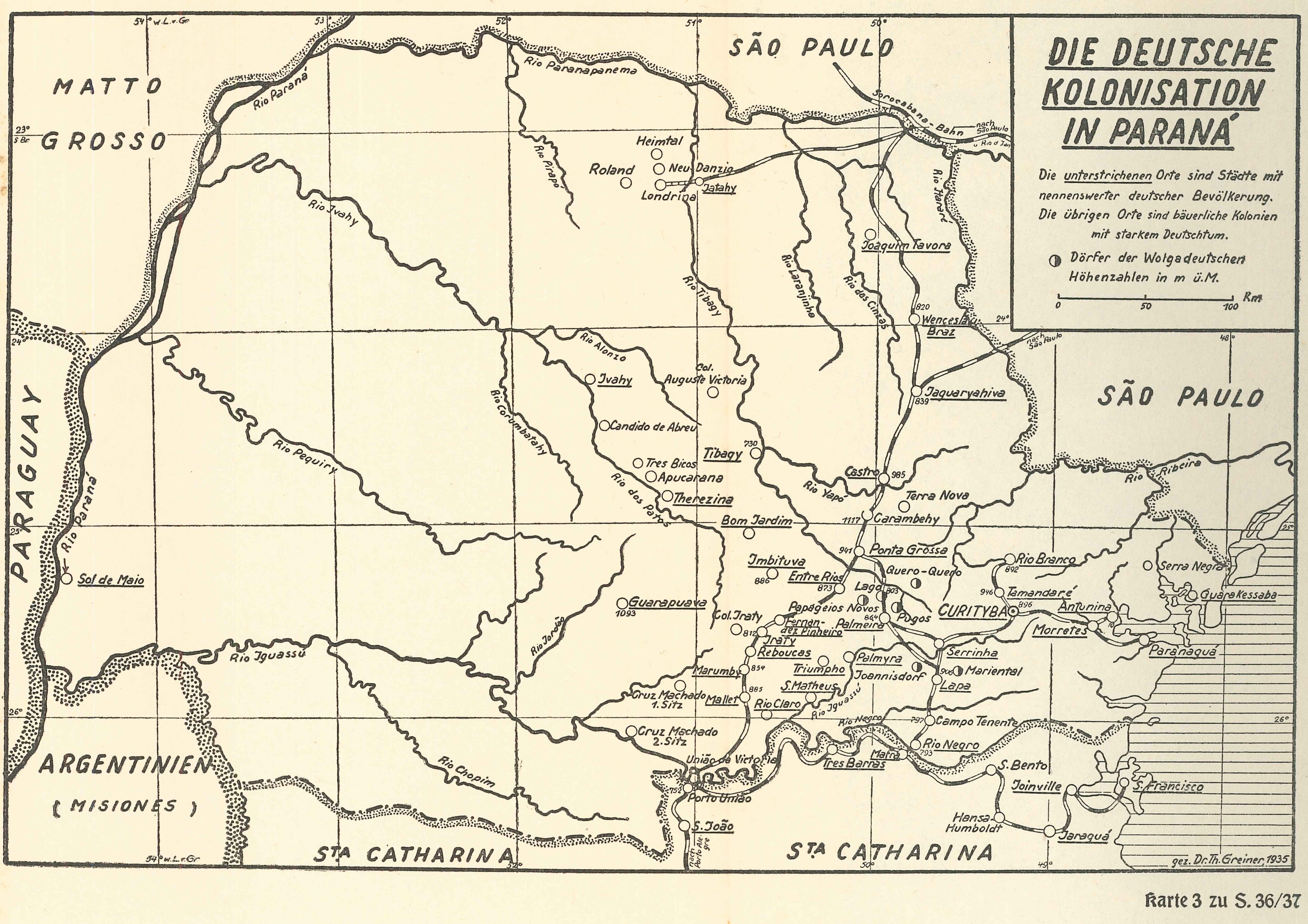In 1871, many of the privileges originally provided to the Volga Germans when they first settled in Russia where withdrawn.
Many began looking for new areas to settle where they could live undisturbed. While some looked to the Russian frontier in Siberia, where enforcement of the law was not as strict, many looked to the Americas as their best hope for the future. In the late 1800's and early 1900's, significant numbers of Volga Germans emigrated to the North American countries of Canada and the United States and thousands more looked for a new beginning in South America.
The reasons for settlement in South America are not well documented, but likely included the lower cost of the sea voyage, less rigorous medical controls at the borders and a more favorable religious environment for those of the Catholic faith.

Another group of scouts coming back from North America met with gentleman named Rudolph Kuhlemann who told them that the Brazilian government was seeking European colonists. He provided this group of Volga Germans scouts with a written list of the requirements to settle in Brazil, but the paper was placed in a book and lost for some period of time. By chance, this paper was found in 1876 and was made public at a one week conference about emigration that was held in the colony of Balzer. At the conference, which was held in August, many people from several colonies attended. Six or seven scouts were selected to travel to Brazil. Their leader was probably Karl Hartmann from Reinwald. Also mentioned are: Jakob Müller from Dönhof, a Gottfried or Joseph Meier from Graf, a Margheim from Merkel, a Schmidt from Kamenka, a Schamne from Graf and Alexander Reuss from Balzer. It is assumed that these scouts traveled to Brazil in September 1876 and returned in January 1877. Reportedly, the scouts were treated well by the Brazilian government who accompanied and advised them. Initially they were taken to a forested site which they rejected in favor of the more familiar steppe land in the Brazilian state of Paraná. This land was located in what today are the Municipalities (Districts) of Ponta Grossa, Palmeira, and Lapa. When the scouts returned to Russia, meetings were again held in various colonies where it was decided that groups of 300 to 400 would emigrate together, although some preferred to travel in smaller groups or alone. The first settlers began arriving in Brazil in late 1877, founding colonies in early 1878 in the Municipality of Ponta Grossa. Settlements in Brazil were divided by religious preference as allowed by the Brazilian government.
-----------------------------------------------------------------------------------------------------------------
Adam Giesinger wrote that "interest in Brazil, first aroused by professor Stelling's lectures, was kept alive by glowing letters home from the two Rothammelers who had gone there in 1873" Stelling was an official of the Saratov Kontor who taught history and geography to the students of the minor seminary of Tiraspol during the 1860's. Stelling was born in California and he spoke enthusiastically of America, Brazil and Argentina. In 1876 scouts were sent to Brazil to investigate settlement conditions, as it was done before with the States, and their reports were favorable. As an example of this intend to settle in Brazil, 10 members of my family emigrated to Brazil in December,1876; As the settlement failed they returned to Russia in 1878. In November, 1877 other 33 individuals emigrated to Argentina. None of this groups considered USA as an emigration destination. In the "Gassmann familienbuch" Nicholas Gassmann stated that his group (approx. 850 people) arrived in Argentina in January 1878 against his will since his intention was to settle in Brazil.
Second, Brazilian Emperor Pedro II was a Germanophile (in fact his wife was an Hapsburg princess) who made all the efforts to attract German (including Russian German) immigration.
Last, the fact that the Catholic faith was the official one in Brazil (as in Argentina) is another aspect to consider, as many Volga Germans chosen South America because this reason. The proportion between Catholics and Protestants Volga Germans was approximately 7 to 1 in South America.
STATES OF IMMIGRATION
- Sâo Paulo
- Paraná
- Santa Catarina
- Río Grande do Sul
Miller, M. M., Garske, Andy, Reeves-Marquardt, Dona B., Michaels, Dan, Dambach, Bob, & Prairie Public Broadcasting. (2015). We (never) don't forget : Germans from Russia in South America. Fargo, N.D.: Prairie Public Broadcasting.
Jorge Luis Göttig, Buenos Aires, Argentina
Passenger Lists of Volga Germans going to South America, 1876-1894 (Gerardo R. Waimann)
How did Germans from Russia end up in Brazil? | A História dos Alemães de Volga no Brasil (YouTube)